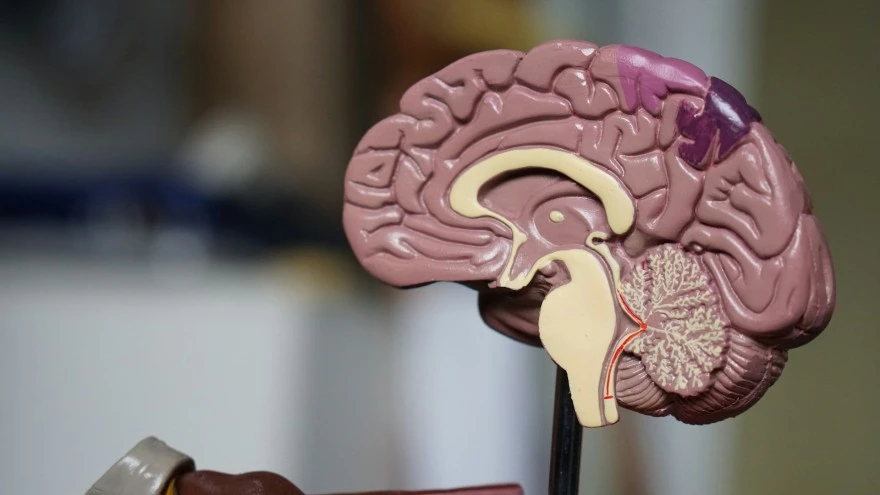Preventive Healthcare
Cholangiocarcinoma: Understanding Bile Duct Cancer and Treatment Options

Table of Contents
- What is cholangiocarcinoma (bile duct cancer)?
- What are the types of bile duct cancer?
- How common is cholangiocarcinoma?
- What are the symptoms of cholangiocarcinoma?
- What causes cholangiocarcinoma?
- What are the risk factors of cholangiocarcinoma?
- How is cholangiocarcinoma diagnosed?
- How is cholangiocarcinoma staged?
- How is cholangiocarcinoma treated?
- How can we prevent cholangiocarcinoma?
- What is the outlook for cholangiocarcinoma?
- How curable is bile duct cancer?
- Conclusion
What is cholangiocarcinoma (bile duct cancer)?
Cholangiocarcinoma, or bile duct cancer, arises from the cells lining the bile ducts - the tubes that carry bile from the liver to the small intestine to aid in fat digestion. This uncommon cancer can develop in any part of the bile duct system.
The bile ducts include:
- Intrahepatic ducts: Small ducts within the liver
- Extrahepatic ducts: Ducts outside the liver, including the common hepatic duct and common bile duct
- Perihilar ducts: The area where the right and left hepatic ducts join to form the common hepatic duct
What are the types of bile duct cancer?
Cholangiocarcinoma types are defined based on their location in the bile duct system, and each type has distinct characteristics affecting diagnosis and treatment strategies.
- Intrahepatic cholangiocarcinoma: This type arises within the liver’s bile ducts, representing about 10% of all bile duct cancers. It can be challenging to diagnose as it resembles liver cancer in appearance and symptoms.
- Perihilar (hilar) cholangiocarcinoma: The most common cholangiocarcinoma type, developing at the junction where the right and left hepatic ducts meet, accounting for 50-60% of cases.
- Distal cholangiocarcinoma: Occurs in the bile ducts outside the liver, closer to the small intestine, making up 20-30% of all cases.
Recognising these cholangiocarcinoma types is essential for effective treatment planning and prognosis.
How common is cholangiocarcinoma?
Cholangiocarcinoma, or bile duct cancer, is a rare cancer, accounting for only 3% of all gastrointestinal malignancies. The global incidence varies, with the highest rates in Southeast Asian countries like Thailand due to risk factors like liver fluke infections. In the US, approximately 8,000 people are diagnosed with bile duct cancer each year.
What are the symptoms of cholangiocarcinoma?
Cholangiocarcinoma symptoms often go unnoticed in the early stages, as they may not appear until the tumour grows and obstructs the bile ducts. As it progresses, common signs include:
- Jaundice (yellowing of the skin and eyes)
- Itchy skin
- Light-colored, greasy stools
- Dark urine
- Upper right abdominal pain
- Unintended weight loss
- Fever
- Nausea and vomiting
If you experience any of these cholangiocarcinoma symptoms, consult your doctor promptly. While these signs don't confirm bile duct cancer, they warrant further investigation, as similar symptoms can arise from other health issues.
What causes cholangiocarcinoma?
The exact cholangiocarcinoma causes are not fully understood, but experts believe a combination of genetic and environmental factors may be involved:
- Chronic inflammation of the bile ducts due to conditions like primary sclerosing cholangitis (PSC)
- Exposure to certain chemicals and toxins
- Liver fluke parasitic infections (mainly in Asia)
- Genetic mutations in genes like TP53, KRAS, SMAD4 and IDH1/2
In most cases, cholangiocarcinoma occurs in people with no known risk factors, so having one doesn't mean you will develop the disease.
What are the risk factors of cholangiocarcinoma?
Some factors that may increase the likelihood of developing cholangiocarcinoma include:
- Primary sclerosing cholangitis (PSC): Chronic inflammation of bile ducts
- Liver fluke infections: Parasites like Opisthorchis viverrini and Clonorchis sinensis
- Choledochal cysts: Congenital bile duct abnormalities
- Hepatitis B or C viral infection
- Cirrhosis (scarring) of the liver
- Obesity
- Older age (over 60 years)
- Smoking
- Excessive alcohol use
- Family history of the disease
Having any of these risk factors doesn't mean you'll get bile duct cancer, and many people with cholangiocarcinoma have no known risk factors. However, if you have PSC or other risk factors, your doctor may recommend regular screening.
How is cholangiocarcinoma diagnosed?
Diagnosing cholangiocarcinoma requires a comprehensive approach to determine its presence, type, and extent, beginning with a medical history and physical examination. Your doctor will ask about symptoms, risk factors, and any history of liver conditions, checking for signs like jaundice, abdominal pain, and tenderness.
Blood Tests:
- Liver function tests assess levels of bilirubin and liver enzymes, which may be elevated if the bile ducts are obstructed.
- Tumour markers such as CA 19-9 and CEA are sometimes elevated in bile duct cancer, though they are not definitive alone.
Imaging Tests:
- Ultrasound provides an initial look at the liver, bile ducts, and nearby organs.
- CT scans can help locate tumours and identify potential spread to nearby tissues.
- MRI with MRCP (magnetic resonance cholangiopancreatography) gives detailed images of bile ducts, showing any blockages or abnormalities.
- PET scans can detect cancer spread to lymph nodes or distant organs.
Diagnostic Procedures:
- ERCP (endoscopic retrograde cholangiopancreatography) allows doctors to view bile ducts, collect samples, and place stents if ducts are blocked.
- PTC (percutaneous transhepatic cholangiography) is a procedure in which a dye is injected into the bile ducts to visualise blockages on X-rays.
- A tissue sample may be obtained through fine-needle aspiration (FNA), core biopsy, or during ERCP/PTC. Examining this sample under a microscope confirms the diagnosis.
An accurate diagnosis is essential for staging cholangiocarcinoma and creating an effective treatment plan. Early testing is especially important for those at high risk.
How is cholangiocarcinoma staged?
Cholangiocarcinoma staging assesses the size and spread of the cancer to guide treatment decisions and prognosis.
The most common staging system for bile duct cancer is the TNM system:
- T (Tumour): Size and extent of the main tumour
- N (Nodes): Spread to nearby lymph nodes
- M (Metastasis): Spread to distant organs like the lungs, bones or brain
Based on TNM scores, cholangiocarcinoma is assigned a stage from 0-4:
- Stage 0: Precancerous changes in bile duct cells
- Stage 1: Cancer is confined to the bile duct
- Stage 2: Cancer has grown through the bile duct wall
- Stage 3: Cancer has spread to nearby lymph nodes or structures
- Stage 4: Cancer has metastasized to distant organs
In general, earlier stages have a better prognosis and more treatment options than advanced stages. Your doctor can explain your individual stage and what it means for your care plan.
How is cholangiocarcinoma treated?
Cholangiocarcinoma treatment is tailored to individual circumstances, influenced by the cancer’s location, stage, and the patient's overall health.
- Early-stage cholangiocarcinoma may be eligible for curative surgical options, which include various procedures such as resection, hepatectomy, and the Whipple procedure. These surgeries aim to remove the affected bile duct and, in some cases, parts of the liver, gallbladder, or pancreas.
- For some patients, particularly those with early perihilar cholangiocarcinomas, a liver transplant may be considered. However, this option requires extensive evaluation and adherence to strict medical criteria.
- In cases where surgery isn’t possible, chemotherapy can be a vital component of cholangiocarcinoma treatment. Chemotherapy uses powerful drugs, such as gemcitabine, cisplatin, and 5-fluorouracil, to destroy cancer cells. It can also help shrink tumours before surgical procedures or control the disease in advanced stages.
- Radiation therapy is another option, utilising high-energy beams to target and kill cancer cells in specific areas. This treatment can also relieve symptoms like pain and blockages.
- Emerging treatments like targeted therapy and immunotherapy offer new avenues for patients. Targeted therapy, such as pemigatinib, focuses on specific genetic changes in cancer cells, while immunotherapy, including pembrolizumab, leverages the immune system to combat cancer.
- Clinical trials present opportunities for patients to access novel therapies that are still under investigation. Additionally, palliative care focuses on symptom relief and improving the quality of life, complementing other treatments at any stage of the disease.
Your healthcare team will create a personalised cholangiocarcinoma treatment plan to address your specific needs. Always feel empowered to ask questions, seek second opinions, and gather support throughout your treatment journey.
How can we prevent cholangiocarcinoma?
While there's no sure way to prevent cholangiocarcinoma or bile duct cancer, you can lower your risk by:
- Treating parasitic liver fluke infections promptly
- Managing conditions like PSC and hepatitis with your doctor's guidance
- Avoiding harmful chemicals and toxins
- Maintaining a healthy weight through diet and exercise
- Limiting alcohol intake
- Avoiding smoking or using tobacco products
What is the outlook for cholangiocarcinoma?
The prognosis for cholangiocarcinoma depends on factors like the tumour location, stage at diagnosis, treatment response and your overall health. In general, the earlier the cancer is caught, the better the outcome.
Survival rates for bile duct cancer are:
- Localised (no spread): 25% alive at 5 years
- Regional (spread to nearby structures): 7% alive at 5 years
- Distant (spread to distant organs): 2% alive at 5 years
How curable is bile duct cancer?
Bile duct cancer is potentially curable when caught at an early stage before it spreads. Depending on the tumour type and location, surgery to remove the cancer offers the best chance for long-term survival.
However, many cholangiocarcinomas are diagnosed at a later stage when a cure may no longer be possible. In these cases, treatment focuses on controlling the cancer, relieving symptoms and maintaining quality of life for as long as possible.
Conclusion
Being diagnosed with cholangiocarcinoma is undoubtedly challenging, but understanding more about this disease is an important first step. If you're concerned about your risk for cholangiocarcinoma or are experiencing potential symptoms, don't delay seeking medical advice. Trusted diagnostic labs like Metropolis Healthcare offer comprehensive blood tests and health check-ups to empower you in monitoring your well-being.


























